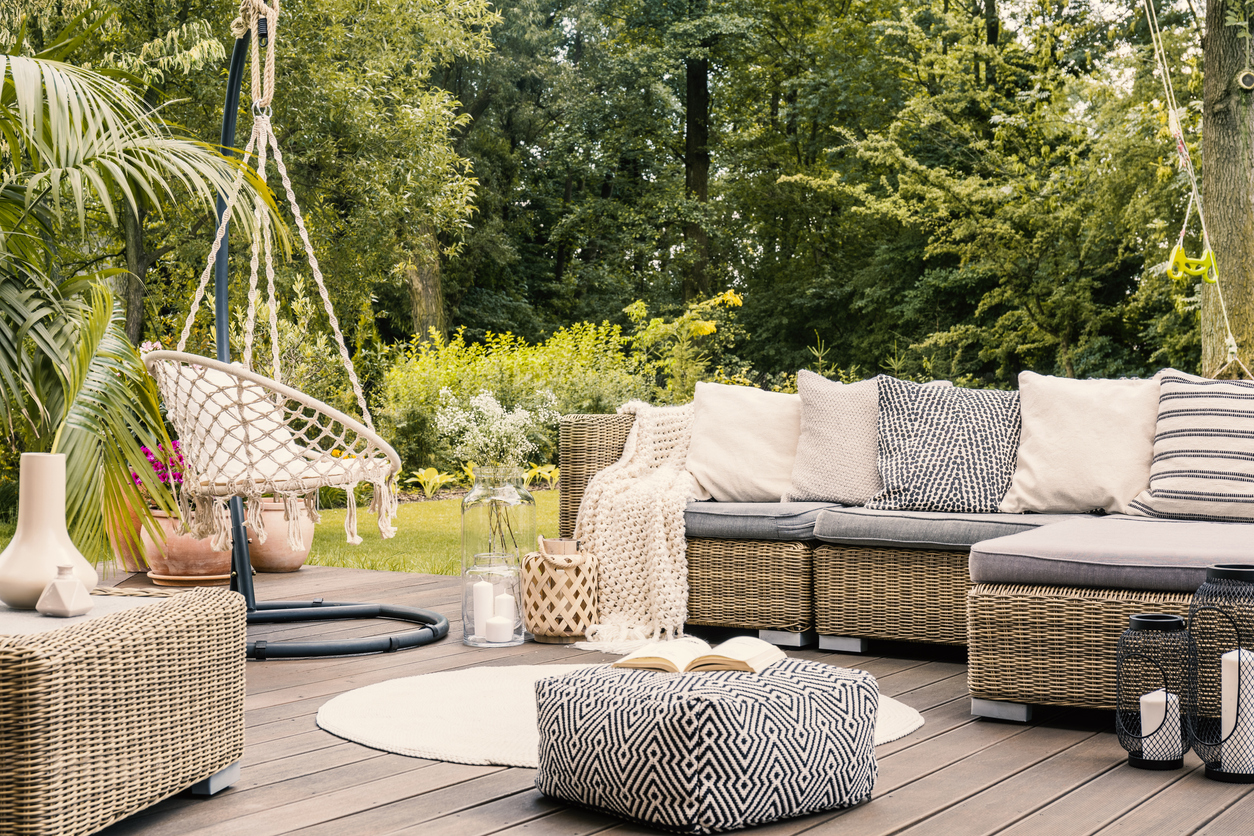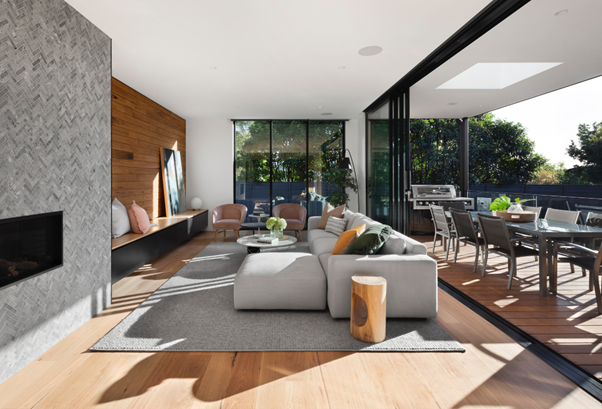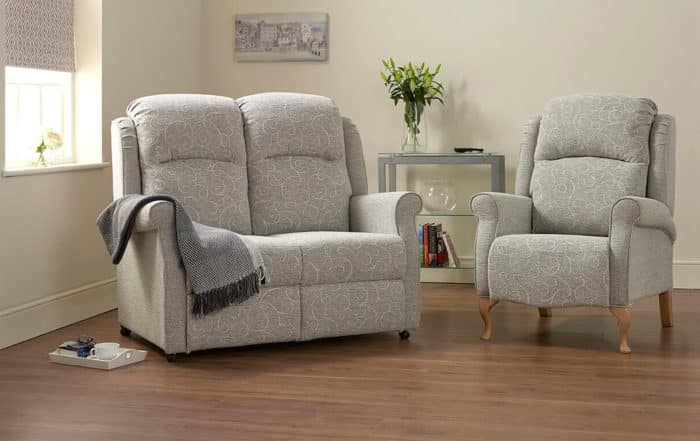12 Tips for a Warm and Cosy Living Room
Social Links
We spend a lot of time in our living rooms, especially in winter when the nights are drawing in early and the soggy ground and biting winds make going outside so unappealing. Having a warm and cosy room to curl up in can be a bright point in an otherwise dreary season.
There are many tips and tricks on how to make your living room snug – keeping the heat in, for one, and using colour and texture to make the room feel soft and inviting. So whether you want to re-watch your favourite film, enjoy a game with the family or settle down with the new book you were given for Christmas, these tasteful living room ideas should get you feeling comfy and cosy in no time.
Keeping in the heat
1. Block out draughts
Ensuring your heat doesn’t escape is one of the easiest and cheapest steps towards energy efficiency. Buy or make a sausage dog draught excluder for the space at the bottom of the door and use a self-adhesive rubber seal around window and door frames.
If you have floorboards, use a filling product to seal the gaps.
2. Move your sofa
Though it’s tempting to bring your favourite comfy chair as close as possible to your heat source, this is in fact counter-productive, as most of the heat will be absorbed by the riser recliner sofa.
By moving it back a bit, the heated air from your fire or radiator will be able to circulate freely, bringing up the overall temperature of the room.
3. Insulate your roof
While this won’t affect how the room looks from the inside, it can make a significant difference to how it feels, as it’s estimated that about 25% of home heating is lost through the roof.
Check with your energy supplier to see if they have any deals on roof insulation or ask your local council about any subsidised schemes they may be running.
4. Try radiator reflector panels
These are panels of laminated aluminium that reflect heat from behind the radiator so it is sent back into the room instead of being absorbed by the wall.
Reputed by their manufacturers to reflect 95% of wasted energy back into the room, radiator reflector panels are designed to hang on the radiator bracket so that anyone can install them, and may pay for themselves in the form of reduced heating bills within a year.
5. Secure your chimney
If you have an open fire with a chimney, then you’ve probably heard the wind whistling through it when it is not in use. That’s the sound of it not only letting a cold breeze into your house, but of it letting about 4% of your warm air out.
If you don’t use your fire at all, it may be better to have it capped by a professional, but if you do, then a chimney sheep – which is like a giant woollen plug for your chimney – is easy to take out and put back in and blocks any airflow (both ways) when you’re not using it.
6. Make use of your curtains
Even on the dreariest of days, opening the curtains to let in some natural light will not only boost your mood, but let in a little heat as well. Remember to close them again roughly an hour before sunset, to keep the heat from leaking back out.
For insulation, curtains made of thick, tightly-woven textiles are best, such as velvet, tweed, wool or suede. Alternatively, try thermal curtains that have an extra layer designed to reflect cold air in winter, and balmy air in summer.
Creating a cosy atmosphere
7. Throw in a rug
Adding a rug to your living space helps create an intimate and tasteful atmosphere by linking items of furniture and covering any cracks in the floorboards.
Wool is a great choice as it’s a natural insulator, and is more flame resistant than other materials. so could be considered if you have a fireplace.
High pile rugs of one inch or more will feel softer and more luxurious underfoot, adding to the cosy feel.
8. Opt for comfy textiles
Your living room is full of textiles, from carpets and curtains to furniture and upholstery. For your sofa or recliner, wool, linen, microfibre and flannel are all great for feeling mellow, as they are soft to touch and hold heat well.
Dark leather can also contribute to a cushy, den feel, or try accessorising with knitted or shag cushions or a fleece blanket.
9. Choose colours with care
The colour of a room can have an enormous impact on how it feels and affects your mood, and it’s easy to find out which colours make a living room cosy.
Reds, yellows and burgundies evoke autumn colours and delicious fires, while deep, rich plums and purples help lower energy so are great for winding down at the end of the day.
To introduce colour, use cushions, accessories or even plants, or throw caution to the wind and paint a feature wall in your favourite homely hue.
10. Introduce earthy wood
Dark, glossy wood brings in the feeling of outdoors without the weather, and simulates a feeling of being underground, tucked up in a den.
You could opt for wood panelling, a wallpaper that imitates wood cladding, or even just add a piece of wooden furniture. Avoid large metallic or plastic surfaces, which can look hard and reflect harsh light.
11. Install alternative lighting
Our bodies are tuned into the natural light cycle, and the fading evening light is a trigger for our bodies to prepare for sleep – so harsh, overhead lighting in the evenings not only kills that intimate feeling, it can also interrupt and disturb our sleep patterns.
Instead, use lamps or wall lighting in warm white or yellow, or if you want to add a magical touch, leave your fairy lights up and enjoy them all year round!
12. Light a fire
There is nothing like the hypnotic flickering and gentle crackle of a real fire to heat up a room – literally and atmospherically. Fires provide a natural, low light and a restful and soothing ambiance, especially at the end of a busy day.
Gas fires, while not the same, may be safer and easier to use, and don’t need as much maintenance. If you don’t have a fire, try lighting a candle and watching it flicker, or even an artificial candle, which can be left unattended.
The bottom line
There are plenty of ways to make a room cosy, and you don’t have to use them all – even just one or two will make a room feel warm and inviting. If you don’t want to make big changes, use accessories such as cushions, rugs or candles, which you can change when the weather improves and bring out again next winter.
Securing your room against heat loss will also help and can save you money along the way. A small investment and a little DIY will keep you warm and snug, with a welcoming room to entertain guests, or the perfect spot in which to curl up and wait for the summer to return.
*This website contains general medical information. The medical information is not advice and should not be treated as such. Read our full Medical Disclaimer here.



